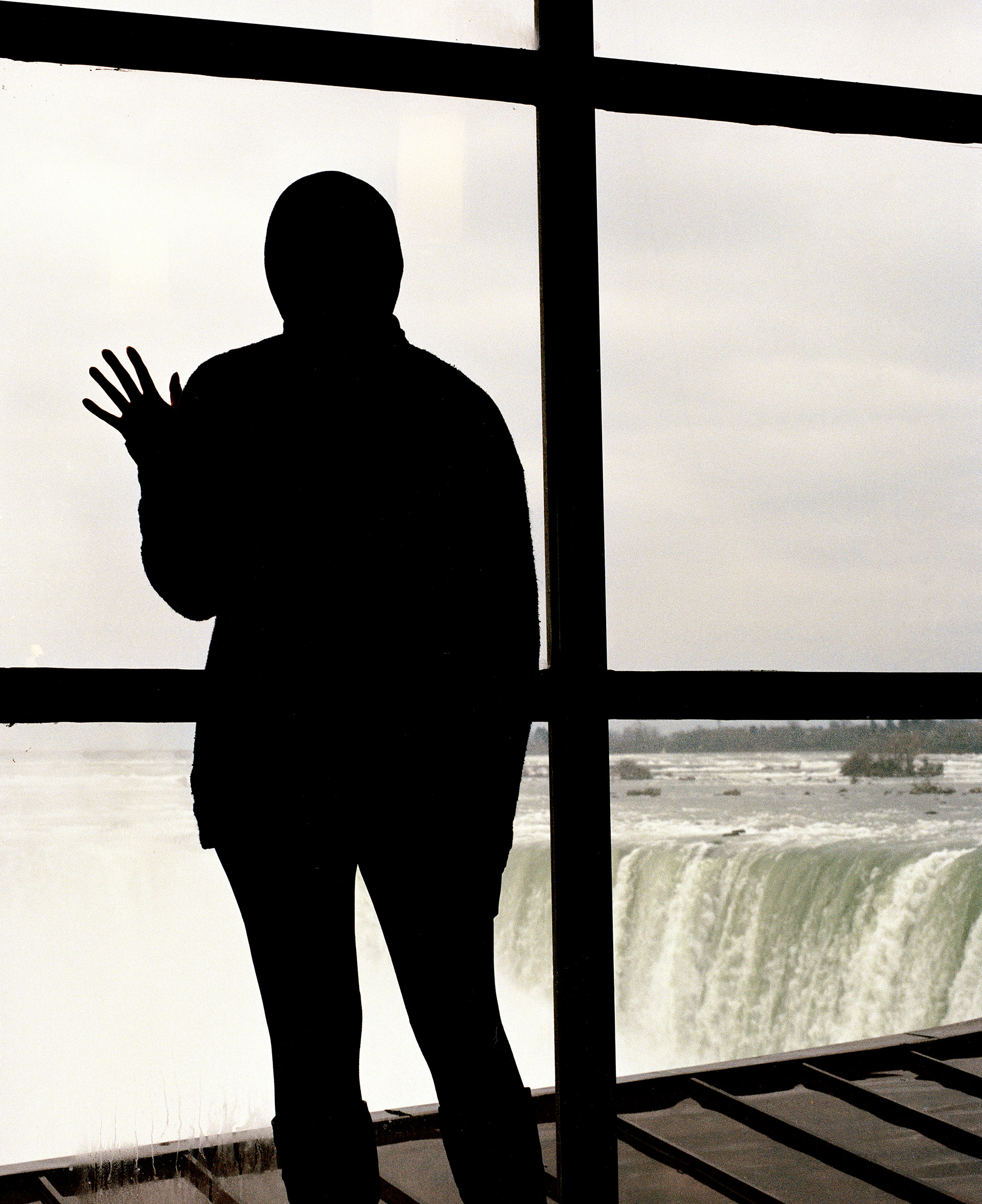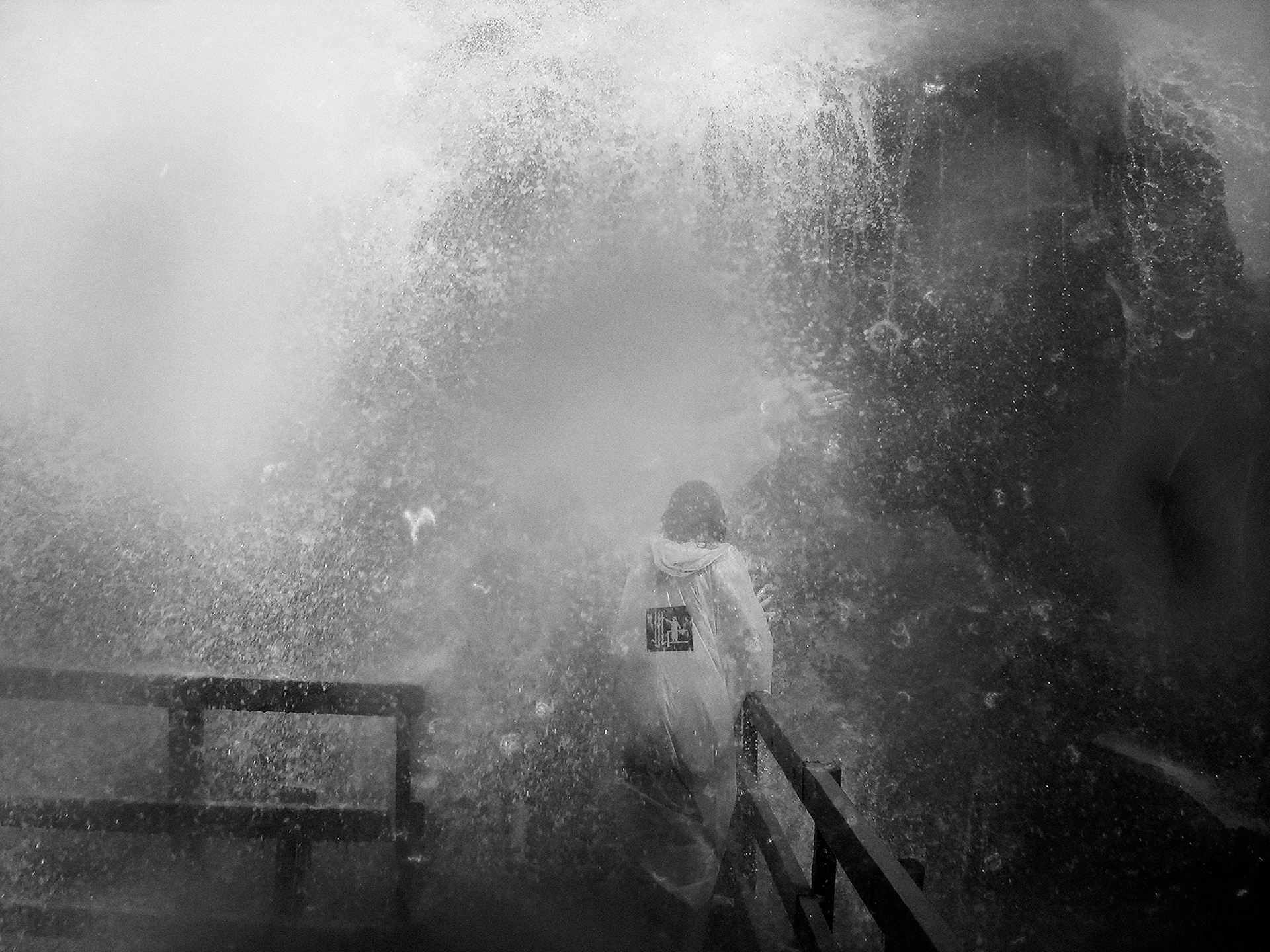Over the course of my senior year, I have been conducting research for a photojournalistic project about the area of Niagara Falls. The Falls fascination stemmed from growing up spending summers at my Grandpa’s farm in West Valley just outside of Buffalo, New York, where a visit to Niagara was the traditional treat to the conclusion of my visit. The roar and rage of the falls was an escape from the almost deafeningly quiet, mundane routine on the farm; this vivid contrast left a memorable impression as I rarely encountered such a sheer force of nature. The fascination has since turned into three visits where I am photographing, writing about my experiences and thinking deeply about the multiple lenses Niagara River can be viewed through: a border, a tourist destination, the honeymoon capital, a sacred resource, a “natural wonder”, a daredevil’s challenge or a source of power and profit. How to discuss such a historical site has been the main difficulty in navigating this project, but I found what resonated with me in my research were the competing aspects of the Falls: nature and industry. I will unpack how this dichotomy has functioned in the past and question their current status at present day Niagara Falls.
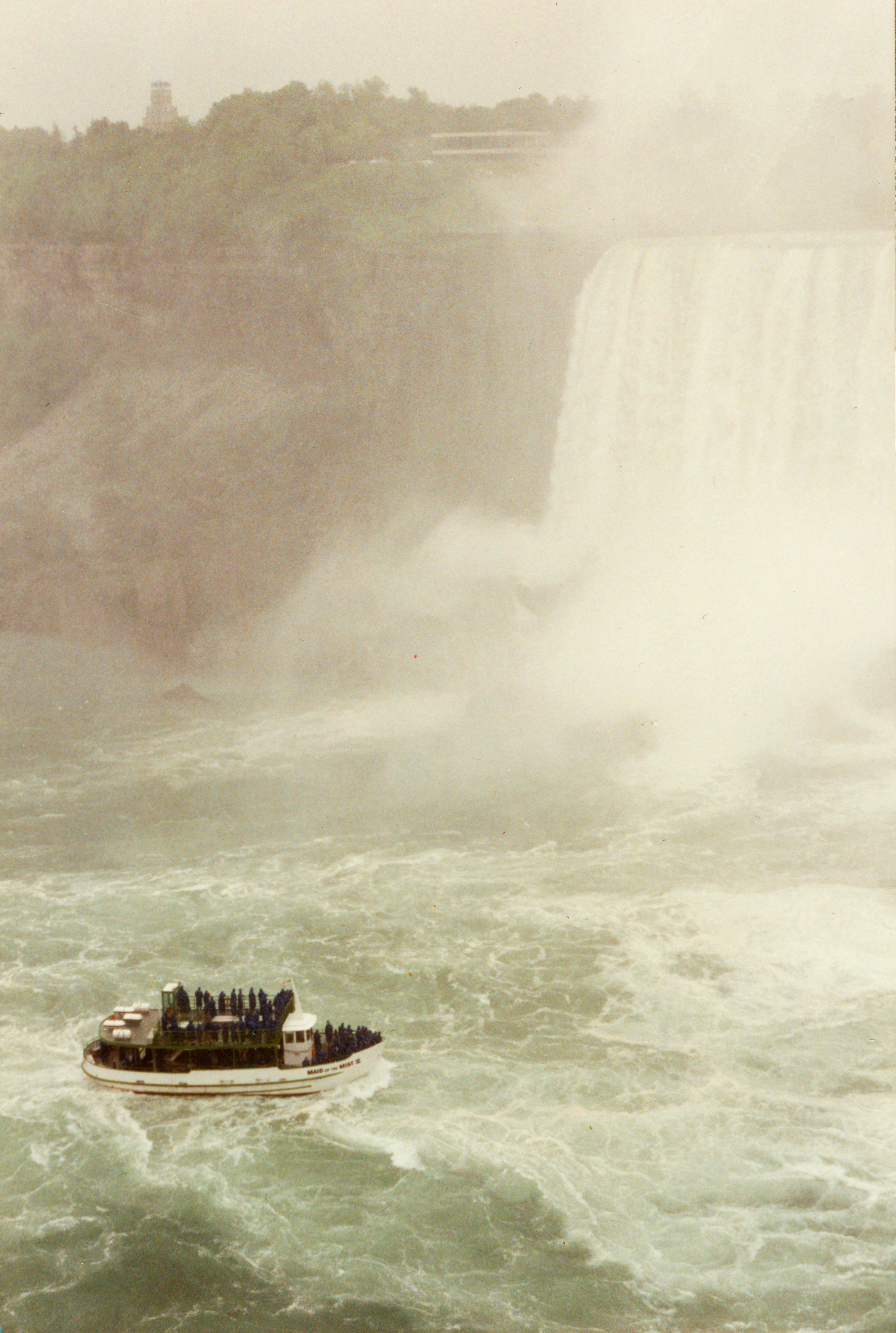
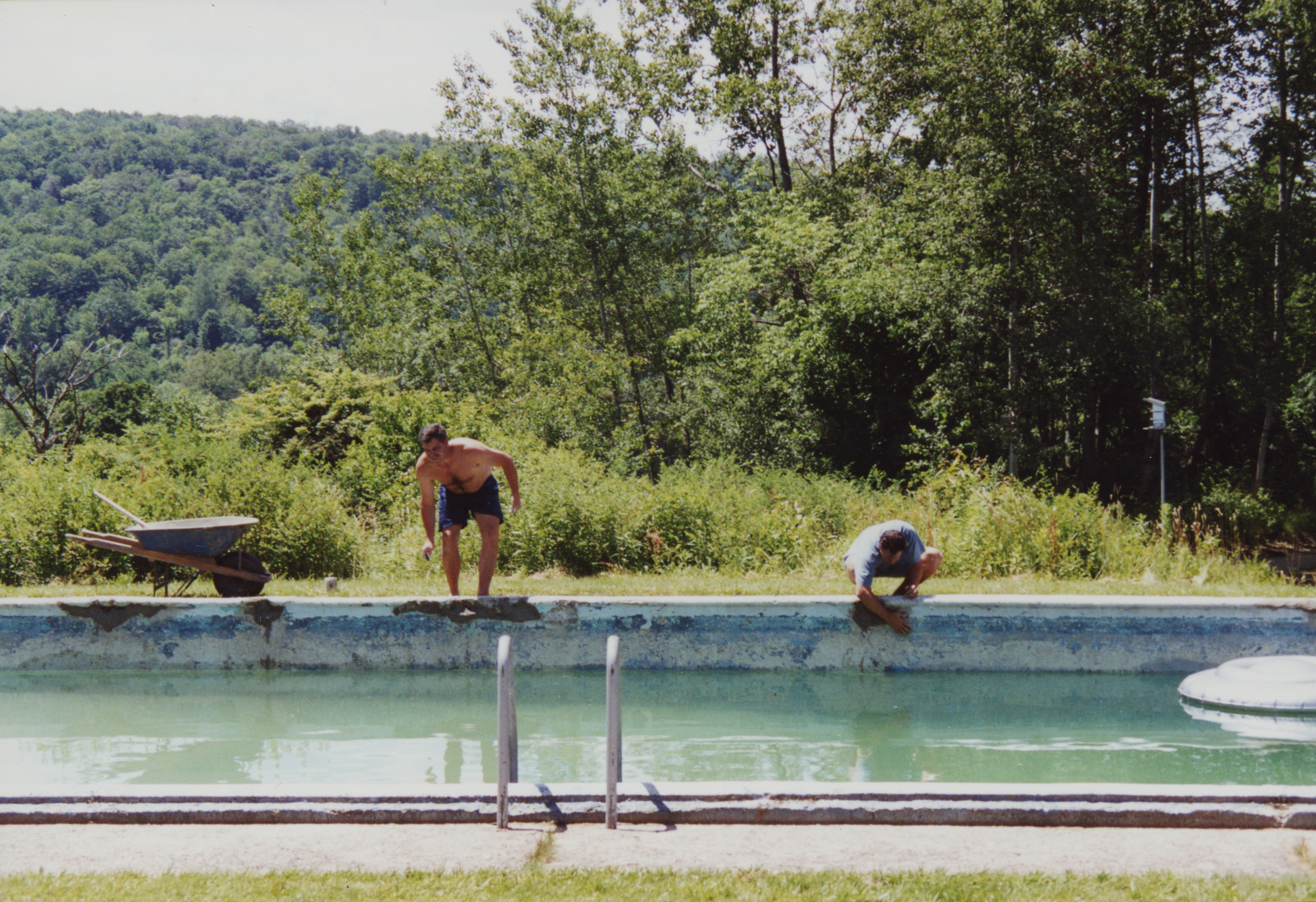
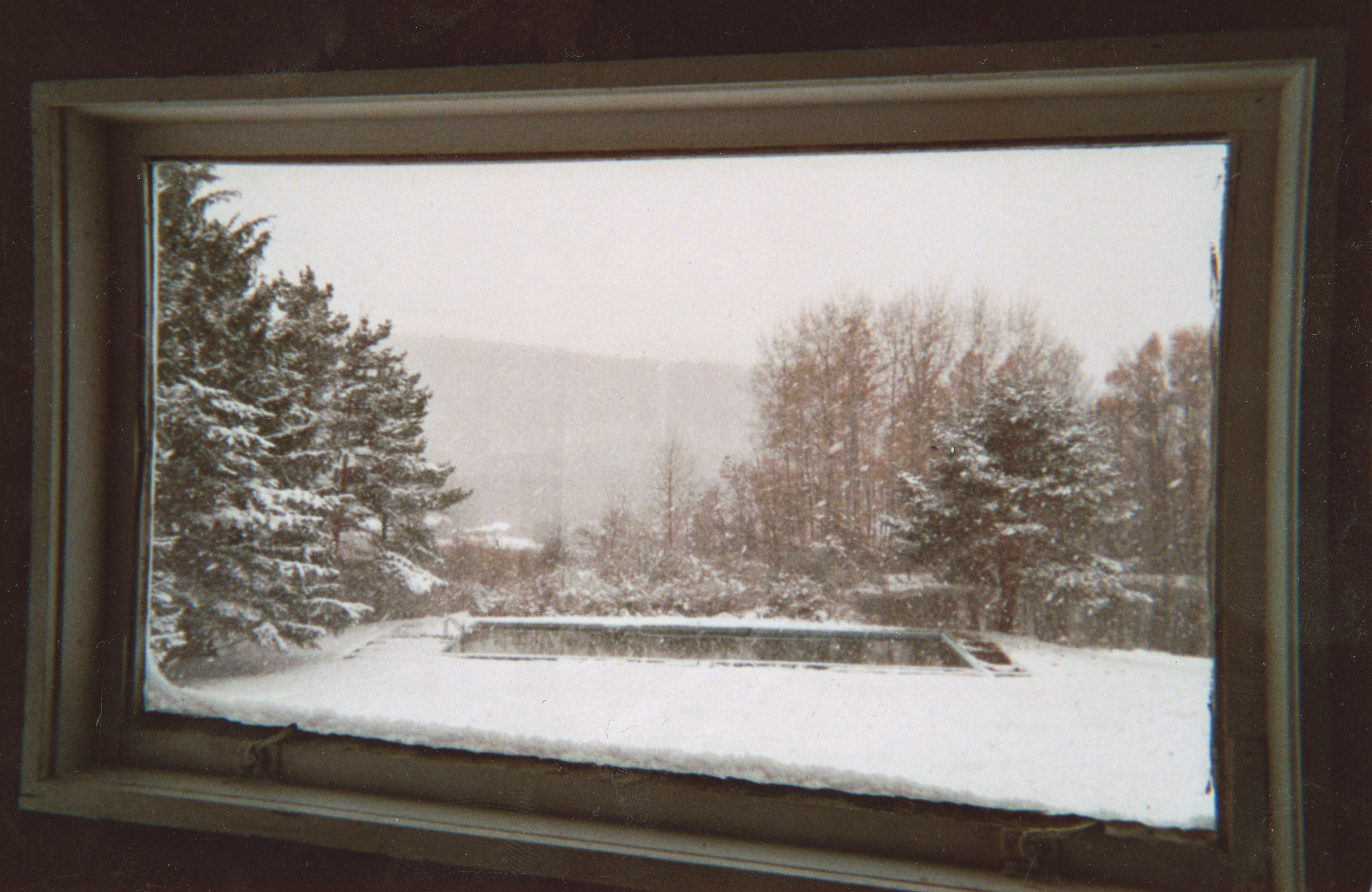
The Falls have long been a tourist destination known for delivering awe- inspiring views and gleams of the sublime. People have found no shortage of expressing their experience with the falls ranging from poetry, novels, paintings, photographs and films. In my visits, I can see how this attraction has sustained and reemerged in the form of selfie sticks, IMAX movies and hourly helicopter rides. Perhaps this interest is due to the inability to comprehend the waterfall, “the fascination of Niagara has depended on the perception of a boundary between nature and the human world- a boundary that encircles and limits the human world, but leaves nature undefined and therefore open to the speculations and reveries of the human imagination.” (1)The idea that Niagara still remains “undefined and therefore open” is precisely what I am calling into question When looking at the human efforts to manipulate, exploit and control Niagara’s attributes, this “boundary” of nature and humans becomes blurred to a point of nonexistence.
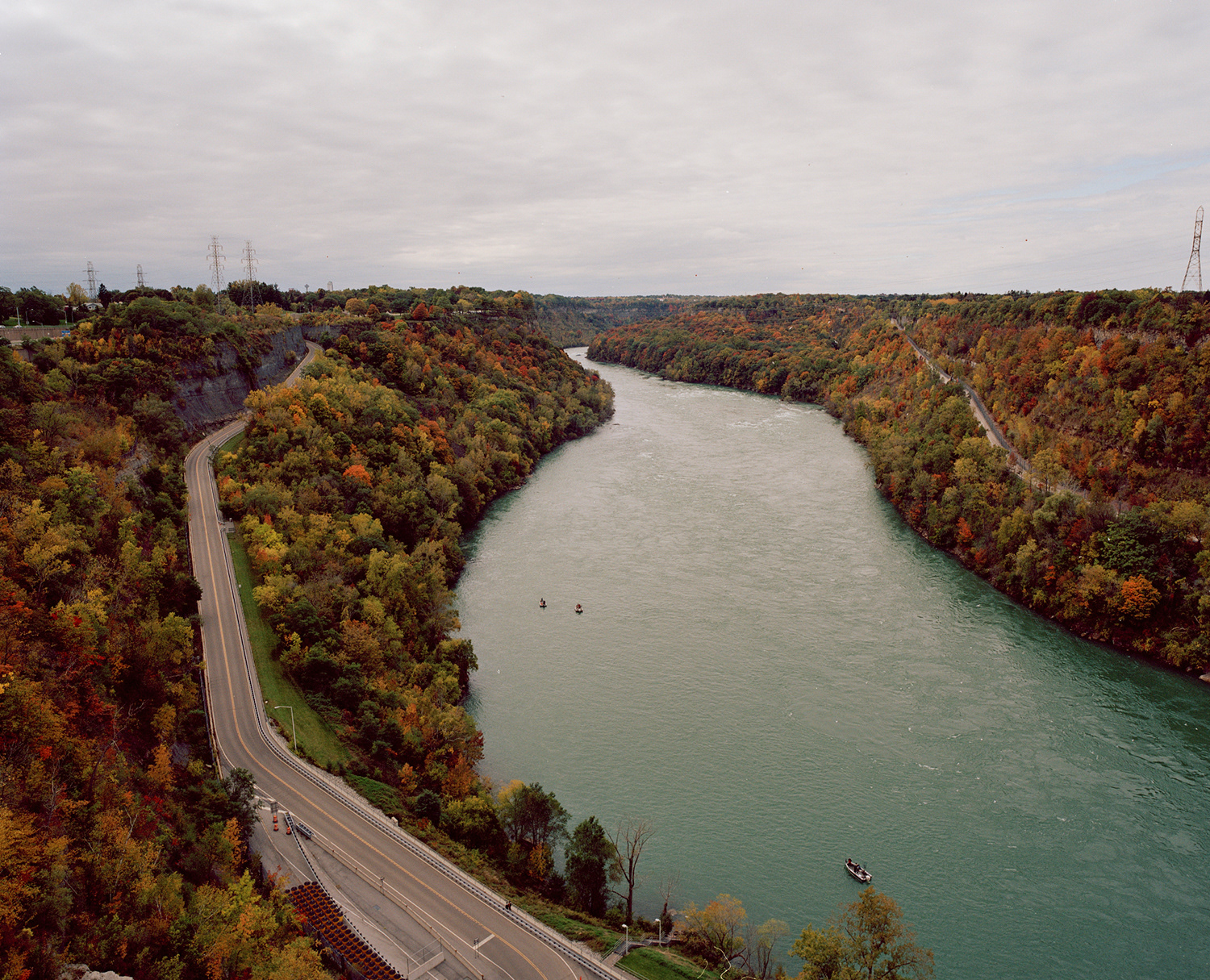

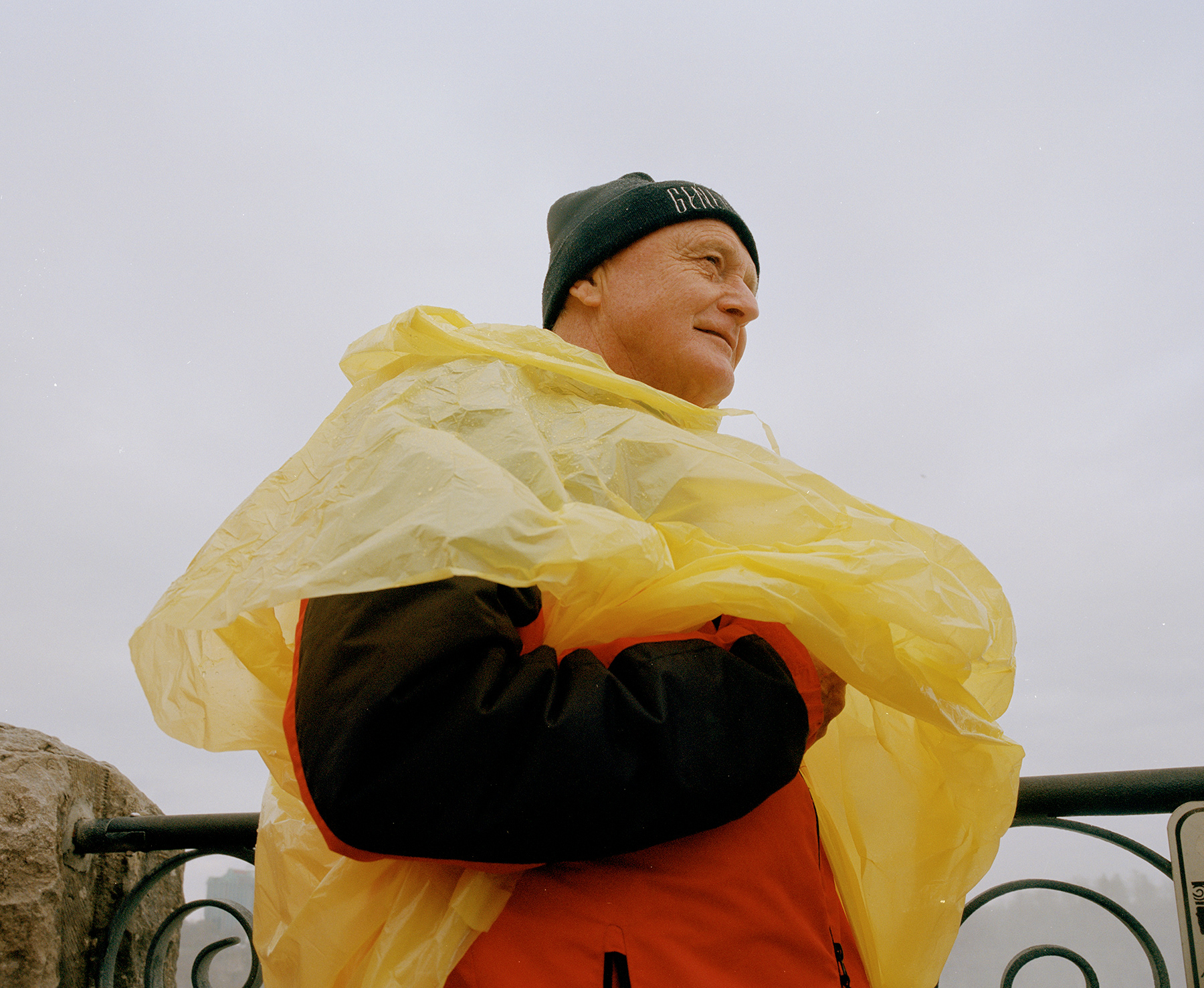
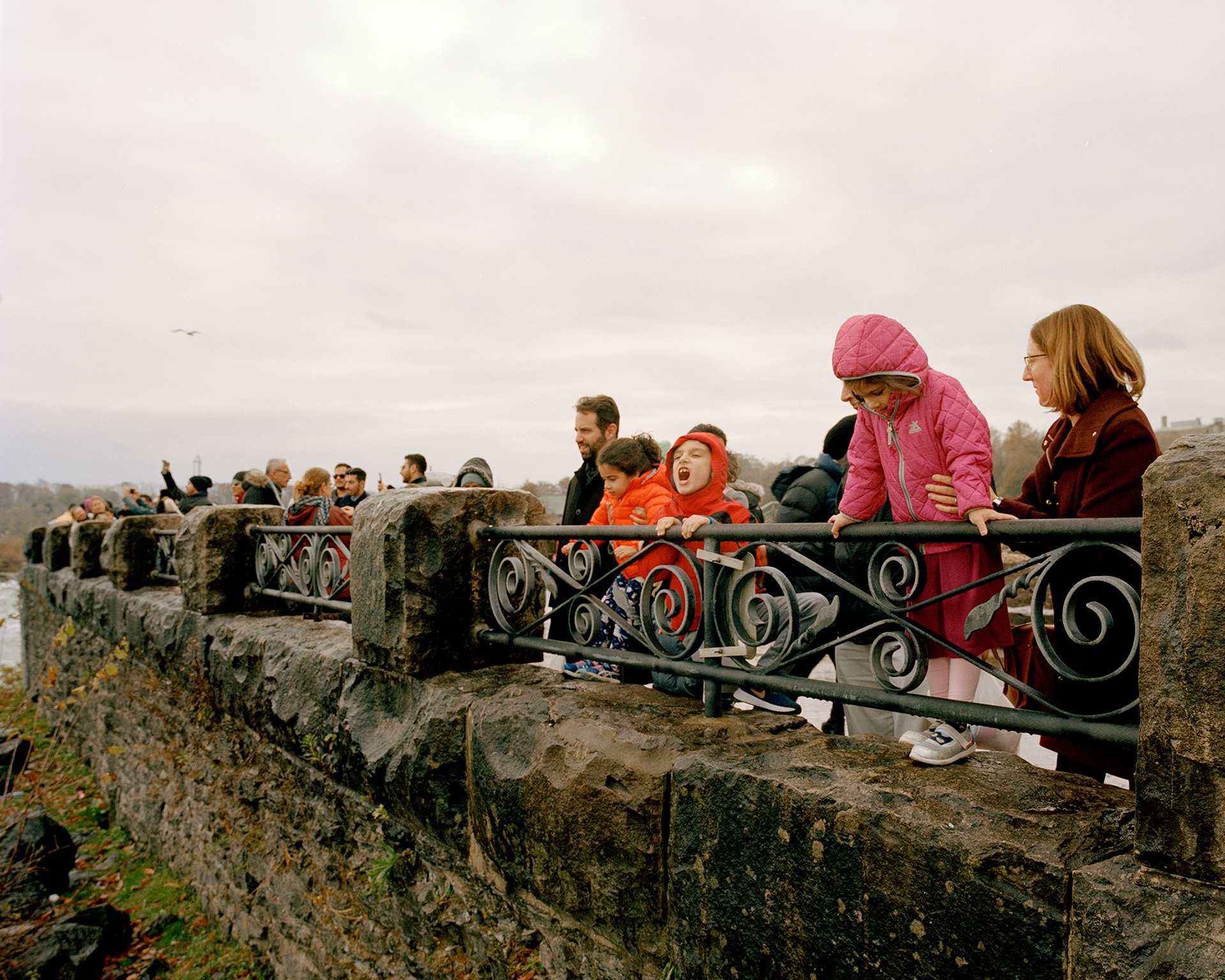
In the presence of Niagara, it’s difficult to imagine how something so wild could be mediated by humans, but if you travel just beyond the fall’s precipice your sightline will be bombarded with emblems of the industry designed to divert and harvest the river’s power. Such infrastructure uses are described in, “The construction of these remedial works in the 1950’s physically reconfigured Niagara Falls and the Niagara River immediately above the falls in order to divert water while masking the scenic effect of lower flow volumes. As a result, depending on the time of day, up to three-quarters of the Niagara River’s water does not go over the falls is sent via massive tunnels to hydroelectric generating stations downstream.” (2) The waterway’s architects are keenly aware of this balance that must be struck in order to divert for power and profit while maintaining Niagara’s performance for its daily tourist population’s satisfaction, a reality rarely mentioned in any of the guidebooks. Part of that balance that is briefly mentioned in the pulled quote, is the time of day water is diverted. There seems to be some equation of how much water can be used for generating in direct relation to tourist visit patterns tracked throughout the day and season. Firsthand, I saw in the early hours of the morning the Falls getting amped up in a faucet-like-fashion to be ready for tourist consumption. Such manipulation felt in direct violation with the status of “natural wonder”. I wasn’t on my own in losing the awe that accompanied the falls, Ginger Strand writes, “Niagara Falls as a natural wonder does not exist anymore. Manicured, repaired, landscaped and artificially lit, dangerous overhangs dynamited off and water flow managed to suit the tourist schedule, the Falls are more a monument to man's meddling than to nature's strength.”(3) Understanding how the two industries of power and tourism work in tandem is integral to how the facade of “nature” has been maintained for so long in the case of Niagara.
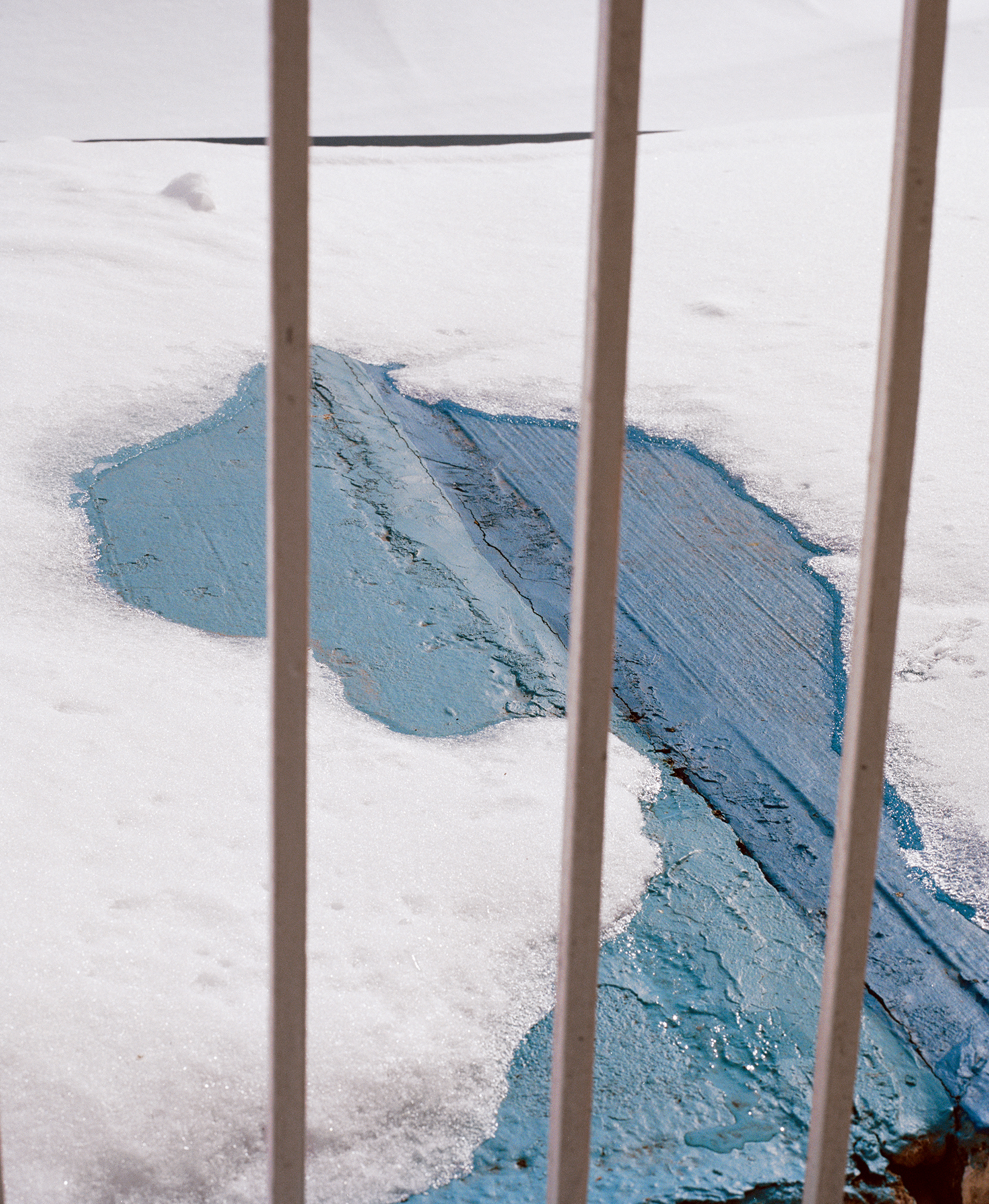
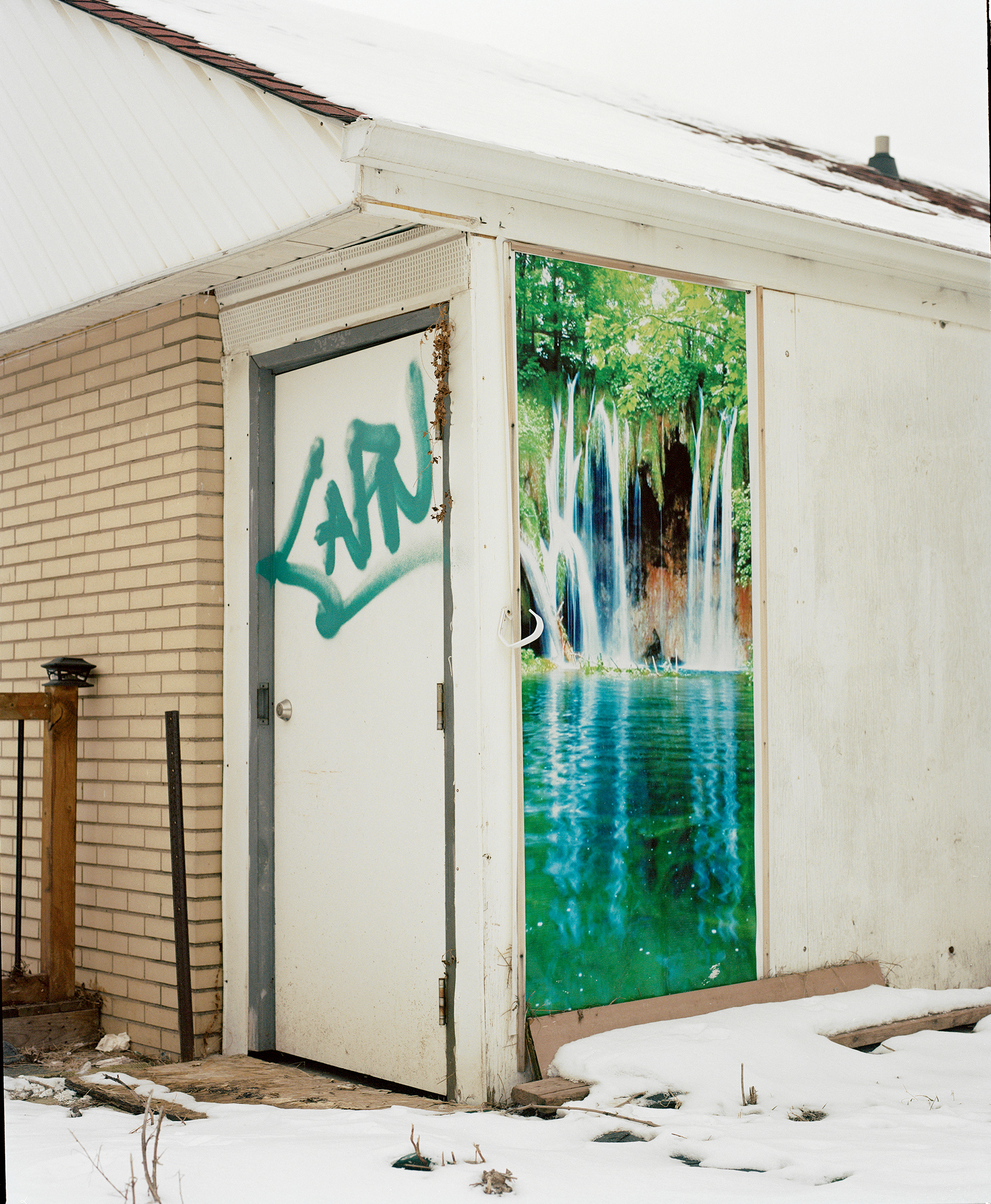
In the age of the Anthroposcene, humans and nature are inextricably linked and in closer quarters than we often think. It begins with the awareness of this fact for our perspectives to shift. Too often, human beings consider themselves exceptions from the rest of the earth. This type of hierarchical relationship is what allows us to feel comfortable in commodifying, possessing and exploiting nature.

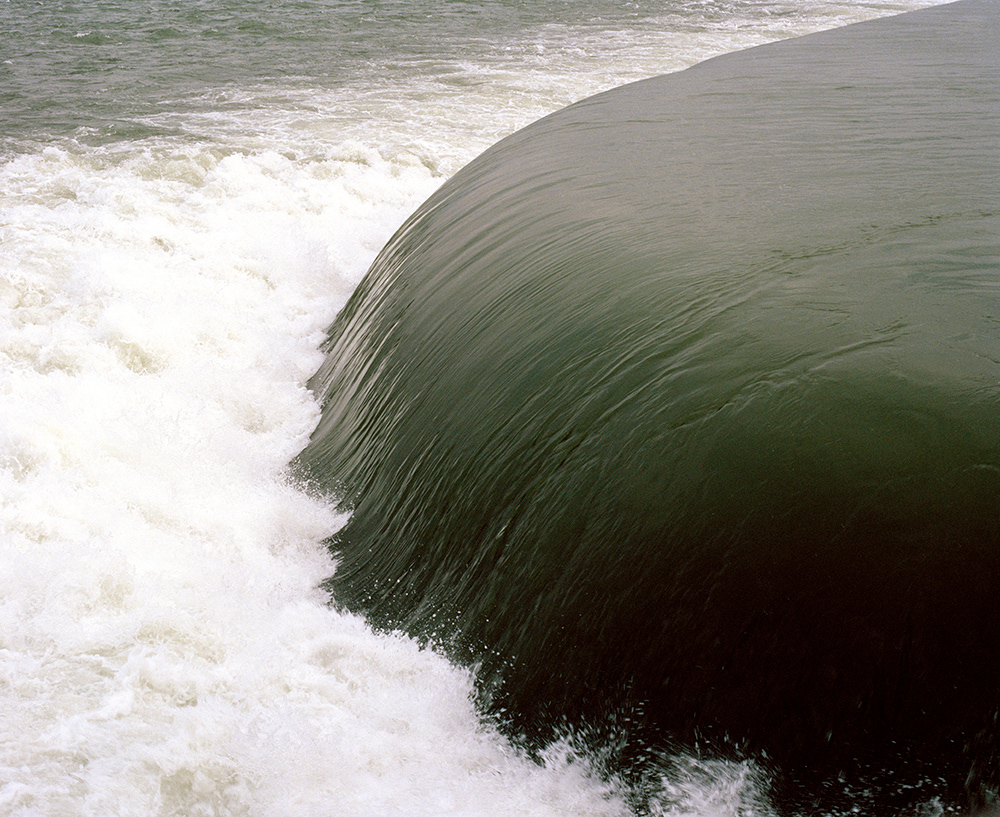


Niagara in the present moment is a spectacle of nature that the engineers and architects of remedial works imagined it to be. It is a recreation of what once was in its color, crest line and flow, but it is far from a living, breathing, natural waterway. Perhaps the falls live in an imaginary place, a place of projection of what once was or what never was. A place intense control over what made it “sublime” in the first place. Presently, I’ve seen that nature of the falls has been lost to the industry that controls it in the human effort for power and profit. Realization of the inner workings has left me reconfiguring the image of Niagara photographically. Throughout this semester, I’ve been asked to challenge my preconceptions of nature, technology, and humans. I now see these categories as far from separate. They each exist in their present state by the accumulated intersections they’ve made. And so does Niagara Falls. To picture, photographically, Niagara without the presence of these humans, traces, and histories would be to exclude the mindsets I’m interested in re-envisioning. Though my site research and thesis has been halted due to the pandemic, I came away with photographs that I believe accomplish my newfound understanding of these intersections. Through photography, I hope to open up a conversation on the pitfalls of the human/ nature binary and give visual language to a new nature.

